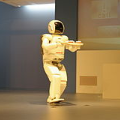In this paper, we study the problem of autonomously seating a teddy bear on a previously unseen chair. To achieve this goal, we present a novel method for robots to imagine the sitting pose of the bear by physically simulating a virtual humanoid agent sitting on the chair. We also develop a robotic system which leverages motion planning to plan SE(2) motions for a humanoid robot to walk to the chair and whole-body motions to put the bear on it. Furthermore, to cope with cases where the chair is not in an accessible pose for placing the bear, a human assistance module is introduced for a human to follow language instructions given by the robot to rotate the chair and help make the chair accessible. We implement our method with a robot arm and a humanoid robot. We calibrate the proposed system with 3 chairs and test on 12 previously unseen chairs in both accessible and inaccessible poses extensively. Results show that our method enables the robot to autonomously seat the teddy bear on the 12 previously unseen chairs with a very high success rate. The human assistance module is also shown to be very effective in changing the accessibility of the chair. Video demos and more details are available at https://chirikjianlab.github.io/putbearonchair/.
翻译:在本文中,我们研究的是将泰迪熊自动坐在先前看不见的椅子上的问题。为了实现这一目标,我们为机器人提出了一个新颖的方法,通过物理模拟坐在椅子上的虚拟人类剂来想象熊的坐姿。我们还开发了一个机器人系统,利用运动规划SE(2)动议,使一个人造机器人能够步行到椅子上,以及整个身体动议将熊放在椅子上。此外,为了应对椅子不能被置于可以进入的姿势以放置熊的情况,还引入了一个人类援助模块,使一个人能够遵循机器人为轮椅和帮助使椅子无障碍而提供的语言指示。我们用机器人手臂和人形机器人来实施我们的方法。我们用3张椅子对拟议的系统进行校准,并在12张之前看不见的椅子上进行测试,这些椅子可以广泛无障碍和无法进入。结果显示,我们的方法使机器人能够以非常高的成功率自主地将Teddy的椅放在12张以前看不见的椅子上。人类援助模块在改变椅子的无障碍性方面也证明非常有效。视频演示和更多的细节可以在 https://chirictiangian/labliangs.




